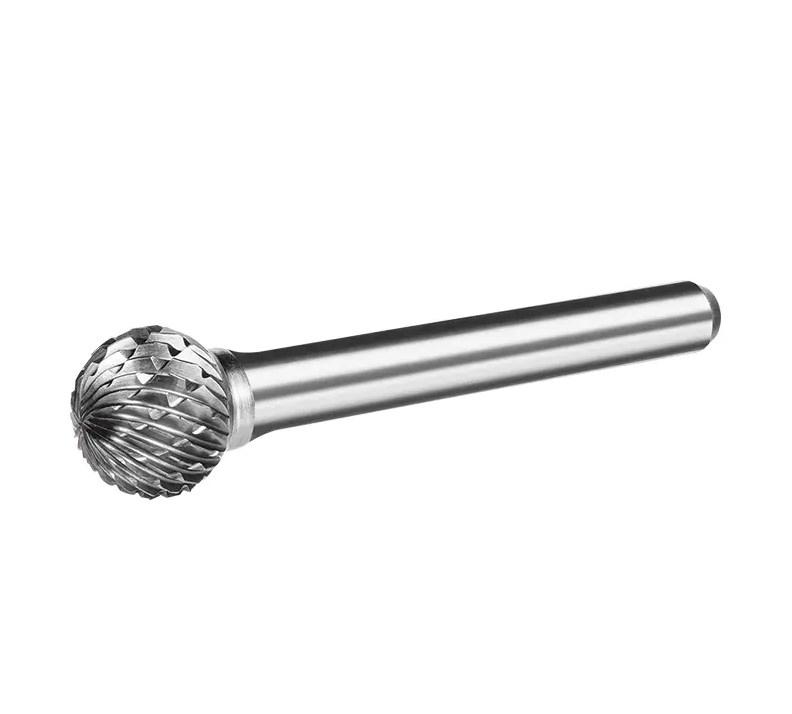The Versatility and Applications of Carbide Rotary Burs in Modern Industries

Carbide rotary burs are indispensable tools in a wide array of industries, from dental and medical to jewelry making and metalworking. These small, yet powerful, rotary instruments are designed to cut, grind, and shape various materials with precision and efficiency. The use of carbide, a hard and wear-resistant material, in the construction of these burs is what sets them apart from other rotary tools, offering a unique combination of durability and performance.
The development of carbide rotary burs can be traced back to the need for a tool that could withstand the rigors of high-speed rotary applications without losing its cutting edge. Carbide, a compound of carbon and one or more other elements is known for its hardness and resistance to wear, making it an ideal material for rotary burs. The manufacturing process of carbide rotary burs involves sintering the carbide particles under high pressure and temperature, which results in a solid, uniform structure that can maintain its sharpness over extended periods of use.
One of the primary advantages of carbide rotary burs is their ability to cut through hard materials with ease. Whether it's stainless steel, titanium, or even hardened alloys, carbide rotary burs can be relied upon to perform precise cuts and engravings. This makes them a popular choice in industries where precision and accuracy are of the utmost importance, such as in the production of intricate mechanical parts or the crafting of fine jewelry.
In the dental industry, carbide rotary burs are used for a variety of procedures, including tooth preparation, cavity removal, and the shaping of dental prosthetics. The precision and control offered by these burs allow dentists to perform these tasks with minimal discomfort to the patient and with a high degree of accuracy. The durability of carbide rotary burs also means that they can be sterilized and reused multiple times, which is a significant advantage in a clinical setting where hygiene is paramount.
Carbide rotary burs are also widely used in the field of sculpture and fine art. Artists working with hard materials such as stone, glass, or even bone can utilize these burs to create intricate details and smooth surfaces with ease. The ability to control the speed and direction of the rotary motion allows for a high level of artistic expression, and the longevity of the carbide rotary burs ensures that they can be used for extended periods without the need for frequent replacement.
In the realm of metalworking, carbide rotary burs are essential for tasks such as deburring, grinding, and polishing. The hardness of the carbide allows it to remove material quickly and efficiently, while the precision of the tool ensures that the final product meets the highest standards of quality. This is particularly important in industries where the integrity of the final product is critical, such as in the aerospace or automotive sectors.
The maintenance of carbide rotary burs is relatively straightforward, as their hard and durable nature means that they do not require frequent sharpening. However, it is important to clean the burs thoroughly after each use to remove any debris that may have become lodged in the cutting edges. This not only ensures that the burs remain in optimal condition but also helps to prevent any damage to the material being worked on.
In conclusion, carbide rotary burs are a versatile and indispensable tool in a variety of industries. Their ability to cut, grind, and shape hard materials with precision and efficiency is unmatched, and their durability ensures that they can be relied upon for extended periods of use. Whether it's in the dental chair, the artist's studio, or the metalworker's workshop, carbide rotary burs continue to prove their worth as a tool of choice for professionals who demand the highest standards of performance and reliability.
- Art
- Causes
- Crafts
- Dance
- Drinks
- Film
- Fitness
- Food
- Games
- Gardening
- Health
- Home
- Literature
- Music
- Networking
- Other
- Party
- Religion
- Shopping
- Sports
- Theater
- Wellness


